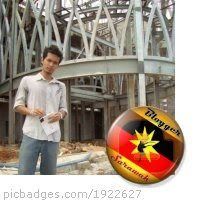 Antoni Gaudí
Antoni GaudíAntoni Plàcid Guillem Gaudí i Cornet (25 June 1852–10 June 1926) – in English sometimes referred to by the Spanish translation of his name, Antonio Gaudí was Spanish Architect who belonged to the Modernist Style ( ART Nouveau ) movement and was famous for his unique and highly individualistic designs.
Community
The Casa Mila, in the Eixample, Barcelona. Gaudí was a devout Catholic, to the point that in his later years he abandoned secular work and devoted his life to Catholicism and his Sagrada Familia. He designed it to have 18 towers, 12 for the 12 apostles, 4 for the 4 evangelists, one for Mary and one for Jesus. Soon after, his closest family and friends began to die. His works slowed to a halt, and his attitude changed. One of his closest family members – his niece Rosa Egea – died in 1912, only to be followed by a "faithful collaborator", Francesc Berenguer Mestres, two years later. After these tragedies, Barcelona fell on hard times economically. The construction of La Sagrada Família slowed; the construction of La Colonia Guell ceased altogether. Four years later in 1916, Eusebi Güell, his patron, died.

Perhaps it was because of this unfortunate sequence of events that Gaudí changed. He became reluctant to talk with reporters or have his picture taken and solely concentrated on his masterpiece, La Sagrada Família .He spent the last few years of his life living in the crypt of the "Sagrada Familia"
On 7 June 1926 Gaudí was run over by a tram. Because of his ragged attire and empty pockets, many cab drivers refused to pick him up for fear that he would be unable to pay the fare. He was eventually taken to a paupers' hospital in Barcelona. Nobody recognized the injured artist until his friends found him the next day. When they tried to move him into a nicer hospital, Gaudí refused, reportedly saying "I belong here among the poor." He died three days later on 10 June 1926, at age 73, half of Barcelona mourning his death. He was buried in the midst of La Sagrada Família.
Although Gaudí was constantly changing his mind and recreating his blueprints, the only existing copy of his last recorded blue prints was destroyed by the Anarchists in 1938 during the Spanish Civil War. This has made it very difficult for his workers to complete the cathedral in the fashion Gaudí most likely would have wished. It is for this that Gaudí is known to many as "God's Architect". La Sagrada Família is now being completed, but differences between his work and the new additions can be seen.
As of 2007, completion of the Sagrada Familía is planned for 2026. They wish to do this because it is the anniversary of his death. However, this may prove wildly optimistic if the worst fears of many eminent engineers and architects are realized. They have pointed out the structural dangers posed by a tunnel for a TGV-style high-speed rail which would run within feet of the church’s foundations one might note the precedent of a metro tunnel in Barcelona’s Carmel district that collapsed and destroyed an entire city block on the 1st of February 2005. Others of Gaudí's works threatened by the city center route chosen by Barcelona's mayor Jordi Hereu for the new rail line include Casa Batllo and Casa Mila.
Design and Concept

Gaudí's unfinished masterpiece, Sagrada Familia, currently under construction.Gaudi’s first works was designed in the style of Gothic Architecture and traditional Catalan architectural modes, but he soon developed his own distinct sculptural style. French architect Eugene Viollet-le-Duc, who promoted an evolved form of gothic architecture, proved a major influence on Gaudí. The student went on to contrive highly original designs – irregular and fantastically intricate. Some of his greatest works, most notably La Sagrada Família, have an almost hallucinatory power.
Gaudí spent ten years working on studies for the design of La Sagrada Família and developing a new method of structural calculation based on a model built with cords and small sacks of lead shot. The outline of the church was traced on a wooden board (1:10 scale), which was then placed on the ceiling of a small house next to the work site. Cords were hung from the points where columns were to be placed. The sacks of pellets, weighing one ten-thousandth part of the weight the arches would to support, were hung from each catenaric arch formed by the cords. Photographs were then taken of the resulting model from various angles. When the photographs were turned upside-down, the lines of tension formed by the cords and weights revealed the lines of pressure of the compressed structure. This is one of the ways that Gaudi obtained natural forms in his work
The same expressive power of Gaudí's monumental works exists in his oddly graceful chairs and tables. Gaudí's architecture is a total integration of materials, processes and poetics. His approach to furniture design exceeded structural expression and continued with the overall architectural idea































































